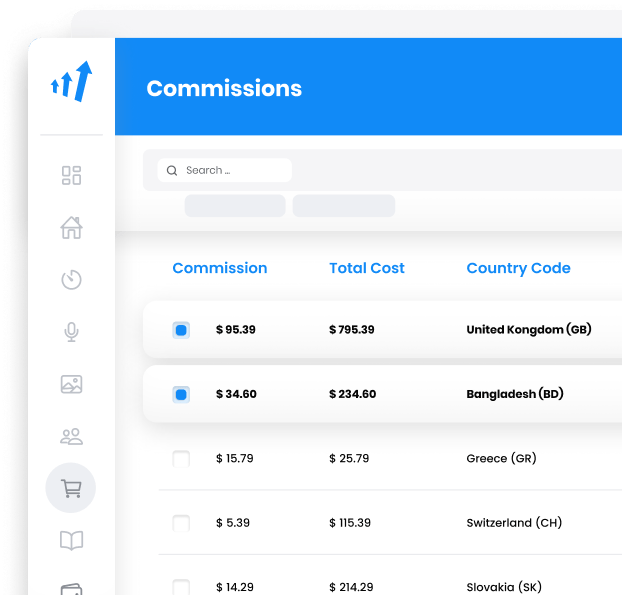What is an ad exchange?
An ad exchange is a digital marketplace where advertisers and publishers can buy and sell ad inventory in real-time. Unlike traditional methods of purchasing ad space, which often required direct negotiations and manual transactions, ad exchanges automate this process, allowing for real-time bidding (RTB) on available ad impressions. This programmatic approach ensures that ad space is sold to the highest bidder, optimizing both visibility for advertisers and revenue for publishers.

How Ad Exchanges Work
Ad exchanges operate by connecting two main parties: publishers who provide ad space (inventory) and advertisers looking to purchase this space to display their ads. The process involves several steps:
- Inventory Listing: Publishers list their available ad space on a supply-side platform (SSP), which then feeds this information into the ad exchange. This inventory can include various formats like display, video, and native ads.
- Real-Time Bidding: Advertisers access this inventory through a demand-side platform (DSP). They set parameters such as target audience, bid amount, and ad format. When a user visits a publisher’s site, an auction is triggered, and advertisers bid for that specific impression.
- Winning the Bid: The ad exchange processes these bids in real-time, awarding the ad space to the highest bidder. The winning ad is then displayed to the user, completing the transaction in milliseconds.
- Data and Analytics: Throughout this process, data is collected and analyzed to provide insights into ad performance, user engagement, and return on investment (ROI). This data helps both advertisers and publishers refine their strategies for future campaigns.
Key Components of Ad Exchanges
Programmatic Advertising
Programmatic advertising is the backbone of ad exchanges. It refers to the automated buying and selling of digital ad inventory using software platforms. Programmatic advertising enhances efficiency by leveraging algorithms to analyze and bid on ad space in real-time, ensuring that advertisers reach their target audience effectively.
Publishers and Advertisers
- Publishers: These are entities or individuals who own digital properties (websites, apps, etc.) and offer ad space. Their goal is to monetize their content by selling ad inventory to advertisers.
- Advertisers: These are businesses or marketers looking to promote their products or services. They aim to purchase ad space that aligns with their target audience and marketing goals.
Demand-Side Platforms (DSPs) and Supply-Side Platforms (SSPs)
- Demand-Side Platform (DSP): A tool used by advertisers to automate the buying of ad inventory across multiple exchanges. DSPs allow advertisers to manage bids, target audiences, and track campaign performance.
- Supply-Side Platform (SSP): A tool used by publishers to manage and sell their ad inventory. SSPs help publishers maximize their revenue by exposing their inventory to a broad range of potential buyers.
Real-Time Bidding (RTB)
RTB is a key feature of ad exchanges, enabling the instantaneous auctioning of ad impressions. This process allows advertisers to bid on each impression as it becomes available, ensuring that the highest bidder’s ad is displayed.
Benefits of Using Ad Exchanges
For Advertisers
- Targeted Advertising: Ad exchanges provide granular targeting options, allowing advertisers to reach specific audiences based on demographics, behavior, and interests.
- Cost Efficiency: By participating in real-time bidding, advertisers can optimize their ad spend, ensuring they pay only for impressions that meet their criteria.
- Flexibility and Control: Advertisers can adjust their campaigns in real-time, experimenting with different strategies to improve performance.
For Publishers
- Maximized Revenue: By exposing their inventory to a competitive bidding environment, publishers can achieve higher CPMs (cost per thousand impressions).
- Ad Quality: Publishers have the ability to filter and block unwanted ads, ensuring that only high-quality and relevant ads appear on their sites.
- Inventory Management: Publishers gain insights into which types of inventory are most in demand, helping them optimize their offerings.
Types of Ad Exchanges
- Open Ad Exchanges: These are accessible to all advertisers and publishers, offering a wide range of inventory. While they provide extensive reach, they may also present risks such as ad fraud.
- Private Ad Exchanges: These are invitation-only marketplaces where publishers offer premium inventory to selected advertisers. They provide more control and transparency than open exchanges.
- Preferred Deals and Private Marketplaces (PMPs): These involve direct negotiations between publishers and advertisers for specific inventory, often at fixed prices.
Ad Exchanges in Affiliate Marketing
In affiliate marketing, ad exchanges play a significant role by facilitating the distribution of affiliate ads across a vast network of publishers. This model allows affiliates to reach a wider audience, while advertisers benefit from increased exposure and potential conversions. Ad exchanges help streamline the affiliate marketing process by automating transactions and providing valuable data insights.
Challenges and Considerations
While ad exchanges offer numerous advantages, they also present challenges such as:
- Ad Fraud: The automated nature of ad exchanges can make them susceptible to fraudulent activities, such as bots generating fake impressions.
- Data Privacy: Ensuring user data privacy is a critical concern, particularly with regulations like GDPR and CCPA.
- Platform Complexity: Navigating the complexities of DSPs, SSPs, and ad exchanges can be daunting for newcomers, requiring a steep learning curve.
Conclusion
Ad exchanges are a vital component of the digital advertising ecosystem, offering a dynamic and efficient platform for buying and selling ad inventory. By leveraging programmatic advertising and real-time bidding, ad exchanges enhance the ability of advertisers to reach targeted audiences and enable publishers to maximize their revenue. As digital marketing continues to evolve, understanding and utilizing ad exchanges will be crucial for businesses looking to thrive in the competitive online landscape.
Related Topics
- Programmatic Advertising: Explore how automation is transforming digital ad buying.
- Affiliate Marketing: Learn how ad exchanges enhance affiliate marketing strategies.
- Digital Advertising Trends: Stay updated on the latest trends shaping the industry.
Frequently Asked Questions
Is Google an ad exchange?
No, Google is not an ad exchange.
How does an ad exchange make money?
Ad exchanges usually make money by charging commissions to publishers and advertisers.
What does an ad exchange do?
Ad exchange is a marketplace where publishers and advertisers can buy and sell advertising space. Ad exchanges are used to buy and sell ad inventory in real time through an auction-based system.
The leader in Affiliate software
Post Affiliate Pro offers a comprehensive affiliate software platform to manage multiple affiliate programs with ease. Enjoy no setup fees, 24/7 customer support, and a free 1-month trial. Ideal for small and large businesses, it features precise tracking, automated workflows, and customizable tools to boost your affiliate marketing success. Try it now and streamline your affiliate operations effortlessly!
Discover Post Affiliate Pro's flexible pricing plans tailored to fit your business needs, with options for Pro, Ultimate, and Network packages. Enjoy a free trial with no credit card required, no setup fees, and the freedom to cancel anytime. Benefit from features like unlimited affiliates, advanced reporting, customizable interfaces, and lifetime support. Save up to 20% with annual billing and take advantage of more than 220 integrations. Perfect for businesses seeking to enhance their affiliate marketing efforts. Visit now to find the ideal plan for you!
Overview of Post Affiliate Network
Discover the power of Post Affiliate Network for managing affiliate programs across multiple brands from a single account.
Effortlessly integrate your e-commerce site with Post Affiliate Pro and boost your affiliate program's success. Our expert team ensures seamless integration with your payment processor, handling technical issues along the way. Enjoy a free trial and free integration service, saving you time and maximizing your ROI. Join now and experience top-notch affiliate management with over 500 integration options.
Explore Post Affiliate Pro's comprehensive Affiliate Program Directory, featuring diverse opportunities with competitive commissions and flexible payout options. Discover programs across various industries, accept worldwide traffic, and elevate your affiliate marketing game. Join today and maximize your earnings!










